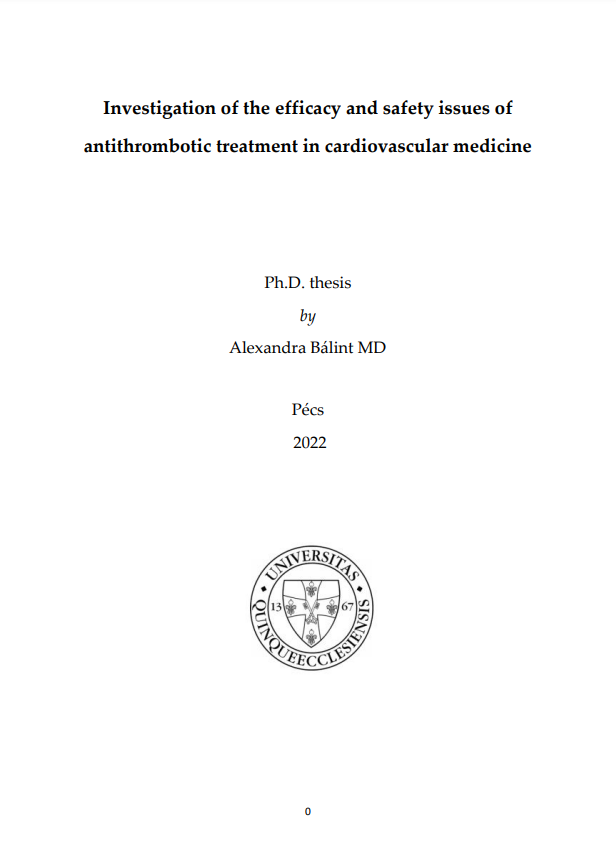Investigation of the efficacy and safety issues of antithrombotic treatment in cardiovascular medicine
Abstract
Coronary artery disease (CAD) is the foremost single cause of mortality and loss of Disability
Adjusted Life Years (DALYs) globally. A large number of this burden falls on low- and middleincome countries accounting for nearly 7 million deaths and 129 million DALYs annually.
Antiplatelet therapy represents the cornerstone treatment and secondary prevention of CAD.
Compared with placebo, antiplatelet therapy has been shown to reduce recurrent major
adverse cardiovascular events (MACE) among patients with stable CAD or ACS. Patients with
ACS undergoing percutaneous coronary intervention (PCI) with drug-eluting stents (DES) are
currently recommended dual antiplatelet therapy (DAPT), consisting of aspirin with a P2Y12
receptor inhibitor for at least 12 months. The treatment goal is preventing thrombotic
complications such as stent thrombosis. However, this strategy increases bleeding risk even in
patients with a high thrombotic risk of ACS. Therefore, unresolved questions still remain in
need of clarification.
Non-valvular atrial fibrillation (NVAF) is the most commonly diagnosed heart rhythm
abnormality. Anticoagulation is required for the prevention of thrombo-embolic
complications related to NVAF. Over the past decade, novel direct oral anticoagulants
(DOACs), dabigatran, rivaroxaban, apixaban and edoxaban have become the treatment of
choice in patients with NVAF over warfarin. However, estimates suggest that about 30% of
patients with NVAF may have simultaneously CAD and 15% will require PCI with stent
placement. The optimal antithrombotic regimen after PCI in patients with NVAF is still
unclear. Identifying an optimal antithrombotic regimen to prevent bleeding and ischemic
events presents an unmet challenge to physicians treating patients with NVAF.

